Thibault Asselborn
The Dynamics of Handwriting Improves the Automated Diagnosis of Dysgraphia
Jun 12, 2019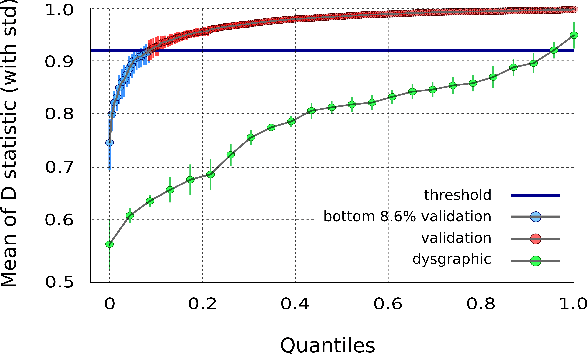
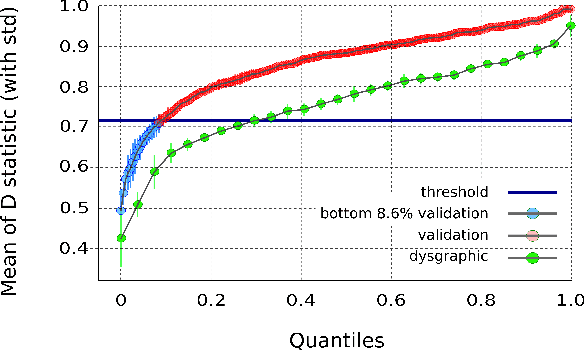
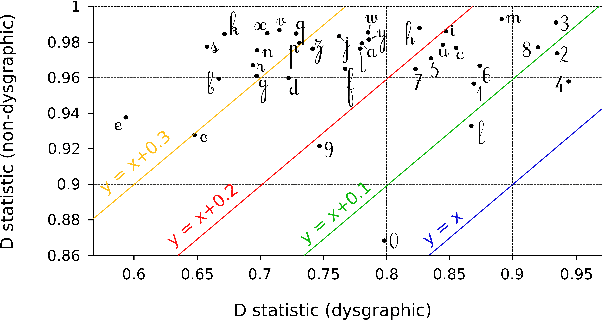
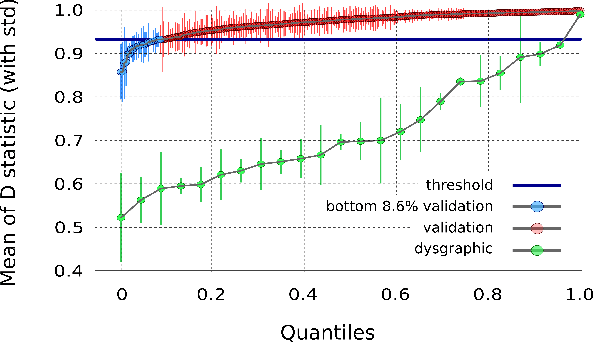
Abstract:Handwriting disorder (termed dysgraphia) is a far from a singular problem as nearly 8.6% of the population in France is considered dysgraphic. Moreover, research highlights the fundamental importance to detect and remediate these handwriting difficulties as soon as possible as they may affect a child's entire life, undermining performance and self-confidence in a wide variety of school activities. At the moment, the detection of handwriting difficulties is performed through a standard test called BHK. This detection, performed by therapists, is laborious because of its high cost and subjectivity. We present a digital approach to identify and characterize handwriting difficulties via a Recurrent Neural Network model (RNN). The child under investigation is asked to write on a graphics tablet all the letters of the alphabet as well as the ten digits. Once complete, the RNN delivers a diagnosis in a few milliseconds and demonstrates remarkable efficiency as it correctly identifies more than 90% of children diagnosed as dysgraphic using the BHK test. The main advantage of our tablet-based system is that it captures the dynamic features of writing -- something a human expert, such as a teacher, is unable to do. We show that incorporating the dynamic information available by the use of tablet is highly beneficial to our digital test to discriminate between typically-developing and dysgraphic children.
Iterative Classroom Teaching
Nov 12, 2018

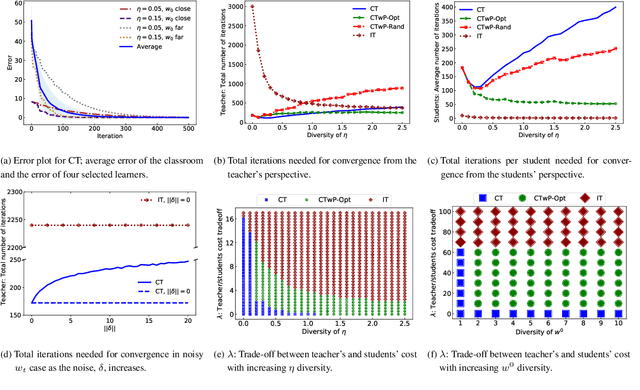
Abstract:We consider the machine teaching problem in a classroom-like setting wherein the teacher has to deliver the same examples to a diverse group of students. Their diversity stems from differences in their initial internal states as well as their learning rates. We prove that a teacher with full knowledge about the learning dynamics of the students can teach a target concept to the entire classroom using O(min{d,N} log(1/eps)) examples, where d is the ambient dimension of the problem, N is the number of learners, and eps is the accuracy parameter. We show the robustness of our teaching strategy when the teacher has limited knowledge of the learners' internal dynamics as provided by a noisy oracle. Further, we study the trade-off between the learners' workload and the teacher's cost in teaching the target concept. Our experiments validate our theoretical results and suggest that appropriately partitioning the classroom into homogenous groups provides a balance between these two objectives.
 Add to Chrome
Add to Chrome Add to Firefox
Add to Firefox Add to Edge
Add to Edge